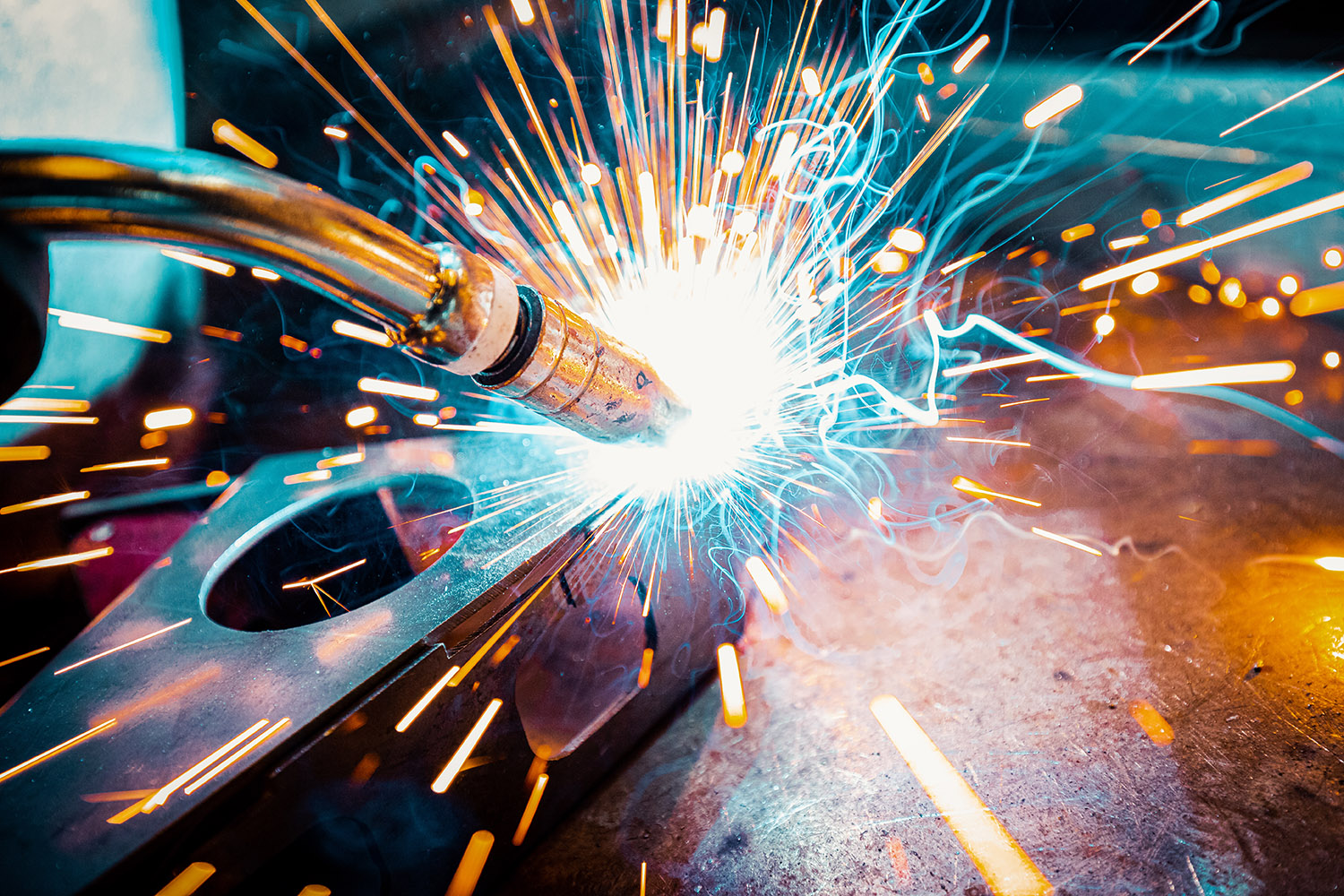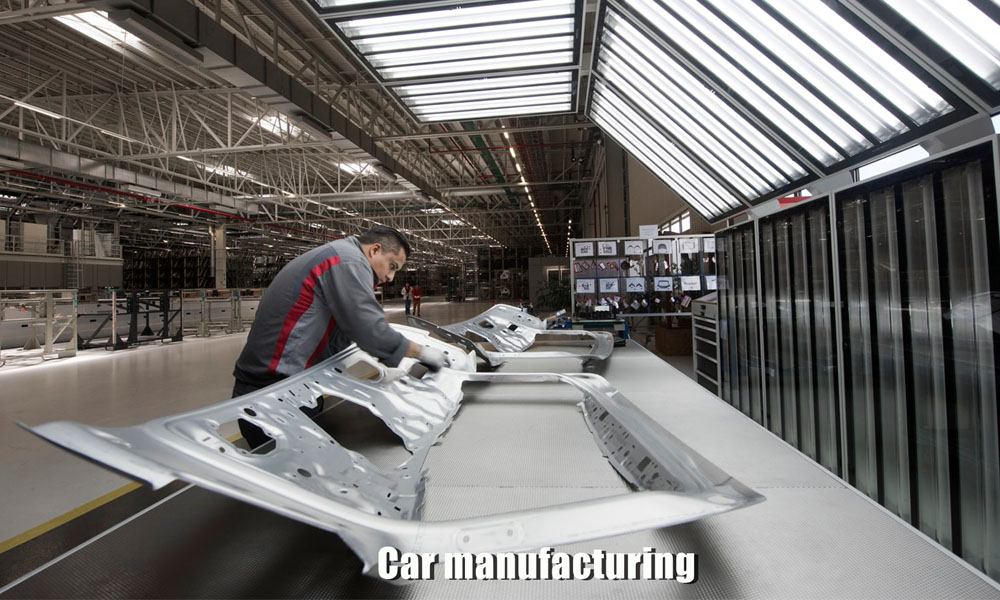Usual Welding Repair Service Issues and Exactly How to Address Them Properly
Welding fixings often come across an array of issues that can threaten the integrity of the last item. Usual troubles include insufficient infiltration, porosity, and misalignment, amongst others. Each flaw presents special difficulties that call for certain approaches for resolution. Understanding these problems is necessary for welders intending to boost their skills and outcomes. This conversation will explore these typical welding repair issues and efficient approaches to resolve them.
Inadequate Infiltration
Poor penetration happens when the weld steel fails to fully fuse with the base product, causing weak joints and potential architectural failings. This issue typically comes from inadequate warm input, incorrect electrode angle, or improper welding speed. Welders may experience inadequate penetration because of a mistake of the required criteria for a specific material density or kind. In addition, contamination on the base product's surface can prevent effective bonding, intensifying the problem. To deal with poor penetration, welders must assure suitable setups on their tools and preserve a clean job surface. Routine examination of welds is recommended to identify any kind of shortages early, permitting prompt modifications and the prevention of endangered structural stability in bonded assemblies.
Porosity
Porosity is a common flaw in welded joints that shows up as small gas bubbles caught within the weld steel. This defect can jeopardize the honesty of the weld, leading to decreased toughness and possible failing under anxiety. Fabrication. Porosity commonly develops from contamination, moisture, or inappropriate welding methods, which enable gases to escape right into the molten weld swimming pool. To attend to porosity, welders need to guarantee proper surface preparation, preserve a clean workplace, and utilize suitable welding specifications. Furthermore, selecting the right filler product and securing gas can mitigate gas entrapment. Routine evaluation and screening of welds can aid identify porosity early, assuring timely restorative actions are taken, thereby maintaining the top quality and reliability of the bonded structure
Misalignment
Misalignment in welding can occur from different aspects, consisting of improper setup and thermal expansion. Comprehending the root causes is essential for efficient resolution. A number of improvement strategies are offered to straighten elements and ensure structural integrity.
Causes of Misalignment
Welding misalignment commonly originates from a range of underlying concerns that can compromise structural stability. One main reason is inappropriate fit-up of parts prior to welding, which can result in voids and unequal surfaces. Variations in thermal expansion during the welding process can also cause distortion, especially if the products being signed up with have different coefficients of expansion. Additionally, poor fixturing and clamping might fall short to hold elements securely in location, resulting in motion during welding. Poorly maintained devices, including welding devices and devices, may present variances in the weld grain, further adding to misalignment. Driver error, stemming from inadequate training or experience, can likewise play a significant duty in developing misaligned welds.

Improvement Strategies Offered
Addressing imbalance efficiently requires a combination of restorative methods customized to the specific issues available. One typical method is using fixtures or jigs to hold components in the correct setting during welding, making sure regular positioning. Additionally, preheating the products can assist lower distortion and improve fit-up. For considerable misalignment, mechanical realignment methods, such as utilizing hydraulic jacks or clamps, can be utilized to fix the position prior to welding. Post-weld warm treatment might also be needed to eliminate stress and anxieties brought on by imbalance. Mindful inspection and modification during the setup phase can prevent misalignment problems from ending up being substantial problems, promoting a smoother welding procedure and enhancing general structural honesty.
Distortion
Distortion is an usual obstacle in welding that can emerge from various elements, including unequal heating & cooling. Comprehending the reasons for distortion is necessary for carrying out reliable avoidance techniques. Resolving this concern not only boosts architectural integrity but also enhances the general quality of the weld.
Reasons of Distortion
When subjected to the extreme warmth of welding, materials usually undertake changes that can cause distortion. This sensation largely emerges from thermal expansion and contraction during the welding procedure. As the weld area warms up, the product increases; upon air conditioning, it acquires, which can develop internal anxieties. On top of that, irregular home heating across a work surface can exacerbate these stress and anxieties, causing bending or bending. The kind of product likewise plays a significant function; metals with varying thermal conductivity and coefficients of development might respond in different ways, resulting in unpredictable distortions. Bad joint design and inadequate fixturing can add to imbalance throughout welding, boosting the chance of distortion. Understanding these reasons is vital for effective welding repair service and prevention techniques.
Prevention Techniques
Effective avoidance strategies for distortion throughout welding focus on regulating warmth input and guaranteeing appropriate joint layout. Maintaining a constant warmth input assists to minimize thermal expansion and contraction, which can result in distortion. Using strategies such as preheating the work surface can likewise minimize the temperature level slope, advertising consistent heating. Additionally, choosing appropriate joint designs, such as T-joints or lap joints, can enhance stability and minimize tension concentrations. Executing proper fixturing to secure the workpieces in position even more aids in maintaining placement throughout the welding procedure. Lastly, staggered welding sequences can distribute warm a lot more uniformly, protecting against local distortion. By applying these techniques, welders can significantly reduce the chance of distortion and enhance the general quality of their welds.
Fracturing
Cracking is an usual problem come across in welding repair work, frequently arising from numerous elements such as incorrect cooling rates, material choice, or insufficient joint preparation. The event of fractures can significantly compromise the honesty of the weld, resulting in prospective failures throughout procedure. To address this concern, welders should first analyze the origin, ensuring that products are suitable and suitably selected for the particular application. Furthermore, managing the air conditioning price throughout the welding procedure is vital; rapid cooling can cause stress and anxiety and lead to splitting. Correct joint design and prep work also add to lessening the danger. Implementing these techniques can boost weld quality and durability, inevitably decreasing the likelihood of weldable breaking in finished weldments.

Insufficient Fusion
A substantial concern in welding repair work is insufficient combination, which happens when the weld metal does not properly bond with the base material or previous weld passes - Fabrication. This defect can cause weaknesses in the joint, possibly jeopardizing the integrity of the bonded structure. Factors adding to insufficient combination include not enough warmth input, improper welding strategy, and contamination of the surface areas being joined. To resolve this concern efficiently, welders should ensure proper pre-weld cleaning and surface area prep work, along with change their welding specifications to accomplish adequate penetration and combination. Routine examination during the welding process can likewise aid determine insufficient fusion early, permitting timely corrective steps to enhance the total high quality of the weld
Overheating
While welding repair work can boost structural honesty, overheating offers a considerable difficulty that can lead to product deterioration. Excessive warm during welding can alter the mechanical homes of steels, resulting in decreased strength, boosted brittleness, and bending. This phenomenon is particularly essential in high-stress applications where architectural dependability is paramount. Identifying overheating can entail visual examinations for staining or distortion, in addition to keeping an eye on temperature throughout the welding process. To mitigate the threats connected with overheating, welders should use proper techniques, such as controlling warm input, changing travel speed, and utilizing appropriate filler materials. In addition, carrying out pre- and post-weld heat therapies can help bring back product homes and improve the overall top quality of the repair, guaranteeing lasting efficiency and safety.
Frequently Asked Concerns
What Are the Common Signs of a Welding Flaw?

Exactly How Can I Evaluate My Welds for High quality?
To check welds for top quality, one can utilize visual examinations, ultrasonic testing, and radiographic techniques. Each method assures architectural honesty, determines problems, and verifies adherence to specified criteria, ultimately enhancing the dependability of the welded joints.
What Safety and security Safety Measures Should I Take While Welding?
When welding, one ought to focus on safety and security by putting on ideal individual safety equipment, guaranteeing proper ventilation, protecting flammable materials away, maintaining a clean workspace, and being aware of surroundings to avoid injuries and accidents.
Can I Fix a Weld Without Redoing the Entire Joint?
Repairing a weld without redoing the entire joint is feasible, depending on the damages (Montana Mobile Welding and Repair Fabrication). Techniques such as grinding, including filler material, or utilizing a welding process can successfully resolve details imperfections while protecting the surrounding framework
What Equipment Are Necessary for Efficient Welding Repair Works?
Important devices for efficient welding repair services consist of a welding equipment, cord brush, mill, protective equipment, clamps, and filler materials. Each tool plays a vital function in guaranteeing high quality and security throughout the repair work process. Porosity normally develops from contamination, dampness, or improper welding strategies, which permit gases to get away into the molten weld swimming pool. Badly maintained devices, consisting of welding devices and devices, might introduce incongruities in the weld bead, additional contributing to imbalance. When subjected to the extreme heat link of welding, products often go through modifications that can lead to distortion. Splitting is an usual issue encountered in welding fixings, usually resulting from various aspects such as improper air conditioning prices, material choice, or inadequate joint preparation. A significant problem in welding repair services is insufficient blend, which happens when the weld steel does not effectively bond with the base product or previous weld passes.
Comments on “Key methods to deal with warping in Montana Mobile Welding and Repair Belgrade”